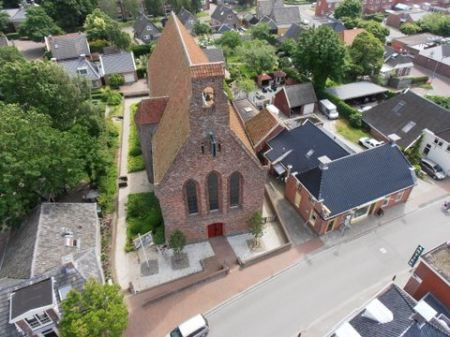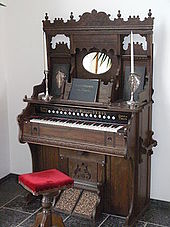
Sense's Reminiscences
by Sense de Jong
- Geurt
- Tante Betje (by Sense)
- Tante Betje (by Truus)
- Miss Roozendaal
- Concert in Winschoten
- A baptism remembered
- My birdhouse
- War veterans
- Henk Smit - bass/baritone
- Stefan
- In memory of Herman - I
- In memory of Herman -II
- Remembering AK
- Our love for music
- Herman - Promoter of Christian Causes
- A Salem evening with Herman de Jong
- From Elsinore to Monschau
- A Danish Treat
- Glimpses of Thuringia and Saxony
- Domie and Hansie
- La Manche, Newfoundland
- Bermuda - Isle in the Sun
- 1932 and 1934
- 1940 - 1945
- Winschoten, Grace on the Venne
- 1948
- Johann Sebastian Bach
- From Generation to Generation
- Seven children and a harmonium
- K.P. - A Man of Enterprise
- Cuba and the tragedy of the MS St Louis
- It all began in Norwich, Ontario
Another site by Sense de Jong:
~ Hinne de Jong ~
A Chronicle
Sites by Henry de Jong:
~ Herman de Jong ~
Memorial
~ Newmaker Notes~
Writings, Pictures, Collections
~ AACS/ICS Niagara Conferences~
1970 - 1991
(What follows is a story about Opa and Oma Smit – great-grandparents of Corrie, Gretha, Annie and Henk. Opa and Oma Smit and family lived long ago in Aduard, a village close to the city of Groningen, the Netherlands. The story was written in Dutch. Translation is by Sense de Jong, Corrie’s husband.)
“You hit the nail on the head,” said Opa Smit, a blacksmith in Aduard- known in the family as Hendrik Smit (born 25-3-1863, died 16-11-1917)- while he led two ladies into the smithy behind his living area. Those ladies had asked him if it was true that there existed subterranean passages under – of all places – the smithy itself! Opa Hendrik pointed to the opening of the smithy’s oven and said: “Behold, the entrance to the underground passage!” The ladies thereupon departed – excited and satisfied. But Opa Hendrik, who was known for pulling other people’s legs, smiled softly.

Aerial picture of the former refectory of the Aduard Abbey. The building to the right is the former home of the Smit family. The forge was located at the back.
It was generally well known that in Aduard, long ago, stood a famous monastery, called the Sint-Bernardus Abbey There had to be many underground passages! People heard that there was a treasure hidden there. “A golden chair,” people whispered. Close to Opa’s house was a well which never, ever, ran dry, even when all the other wells had dried out after hot summers.
People said that the water in Opa Hendrik’s well came from a subterranean space. It was told that anyone who descended into Opa’s well always did so holding a lit candle. And if the candle’s flame died, that person had to get out of there like a bat out of a hole!
The Smit home was located on the Burgemeester Seinenstraat 52, smack in the middle of the former monastery complex. It stood on historic grounds. Long ago, under the direction of a professor Van Giffen, they had an archeological dig there. And, lo and behold, they did find bricked-up underground passages which were as tall as a man. And they are still there – really! It turned out that the monks used these passages as sewers which emptied into the moats surrounding the “klooster” property. And, listen to this. They also suspected that there were special passages designed to help people escape to a nearby sister-monastery close to the city of Groningen. You know, Aduard is one giant archeological treasure room!
The Smits buy a “huisorgel” harmonium
The home of Opa Hendrik Smit and Oma Anje Scheuder (born 1-5-1861, died 28-11-1936) was formerly a copper-smithy combined with a bike business, Oma Anje learned to bike at the age of 50! She tried it, even though she fell because of those long skirts. But Oma always picked herself up and drove on, happy as a lark.
Opa and Oma had seven children, including twins. (Note: See their pictures printed in the story “From Generation to Generation” shown in the index. – sdj) They loved singing. And that`s how Opa - the first one in Aduard – bought a “huisorgel,” also called a harmonium. One had to use two pedals to produce a sound. And now the entire family could stand around the organ, singing – in harmony even! – the songs of that most beloved composer in those days: Johannes de Heer. The Smit family, indeed, was a “gereformeerd gezin” (Reformed family): a family called “Seven children and a harmonium.”

There is a story about the twins: Koene and Kees (Corrie’s dad). They were numbers three and four of the children. Something scary happened when they were little. While they were sleeping in their little bed, a large cat decided to stretch her body over their warm little necks and fell asleep. Fortunately, this was discovered in the nick of time. Both babies were red as a beet and clung to each other like drops of sweat. They did not suffer any damage as a result of this episode. Both Koene and Kees reached the age of four score and ten!
The arrival of the steam engine and noise pollution
Opa Hendrik was a lively little man and had innovative ideas. He had the foresight to buy a steam engine. Soon deafening sounds emanated from the workshop, especially when the steam-driven hammer was put to work on a piece of steel. The local pastor, Rev. Broekhuizen, who lived in the parsonage behind the Smit residence, complained he had difficulty making his sermons.
In those early years, Oma Anje did not only look after her family, but also cared for eleven years for her father-in-law, Koene Heres Smit, who had become an invalid as a result of a fall and who subsequently turned blind.
Oma Anje and her three daughters, - Trientje, Foske and Grietje – had her hands full with “the boys.” Mountains of dirty wash were very common. Opa Hendrik, always thinking and being sharp, had a solution. He connected the steam engine to the washing machine. The results were not promising: workmen’s blouses and “borstrokken” (hot, woollen, itchy undershirts) were plastered to the ceiling in a flash!
In typical Dutch fashion, the entire house had to be cleaned once a year from top to bottom. Not only the inside, the outside, too. The outside walls and the gutters had to be scrubbed and scrubbed to remove the rainwater stains. And what do you think happened inside? Oma Anje was in charge and laughed all the time. She kept on laughing even when her blind, needy father-in-law, in the middle of the night, called “Aaaanje!!!” -because he thought it was already day time.
Because of the noise pollution, Opa Hendrik eventually decided to move the blacksmithy to a place outside the village. Result? A little factory was born, which produced spades, hoes and hay forks and the like. He invented a logo: HEROS, an abbreviation of sorts of the name HEndrik-ROelof-Smit. His products were considered solidly made, guaranteed to last for a long time. (It is now believed that sons Hendrik and Roelof actually started the business – sdj)
Opa Hendrik regularly had “issues” with the aforementioned Rev. Gerrit Broekhuizen, who for 49 (too long) years served as the pastor of Aduard’s Gereformeerde Kerk. This man figured he could call the shots. Opa served on the school board, but that board was accountable to the consistory of the church! Opa Smit figured that was wrong. He very wisely figured, righty, that Church and School needed to be separate. However, Rev. Broekhuizen did not agree. Because of this issue it is thought that Opa was never chosen as an elder of the church.
Unfortunately, Opa Hendrik became sick, suffering from a blood sickness that caused high fevers. In 1917 he was taken to the “Academisch Ziekenhuis” (Teaching Hospital) in the city of Groningen where he died at the age of 54. Hendrik and Roelof, two of his sons continued the business until 1967. Hendrik had no sons, but Roelof had five. However, none of them were interested in taking over. The entire business was subsequently sold to the Family De Wit. And that’s how “HEROS,” the little business started by Opa Hendrik came to an end.
However, for many years thereafter, every daughter of Opa and Oma Smit was usually referred to as “dat wichtje van de schoppensmid” (one of those blacksmith girls).
Somebody (Rie Boele-Smit) made a little poem during 2003 in connection with this story, and this is a free translation:
The golden chair, found by no one,
is still hidden in the ground.
But out came an ogre of monster size,
out of that underground pit.
It had a long snout,
and after a long blow, it blew
“The Smit fire out!”
[an error occurred while processing this directive]